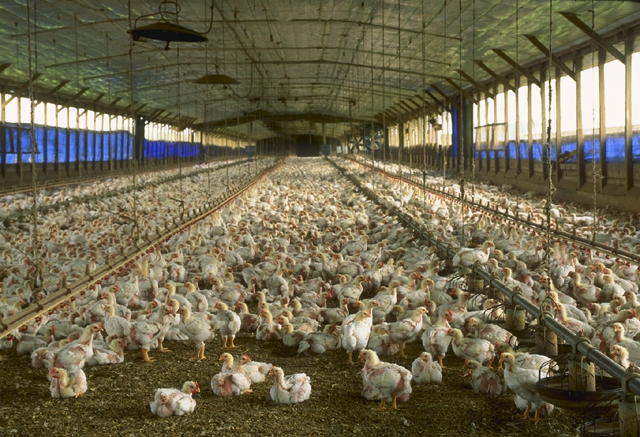The effects of animal agriculture on the earth
Téana Graziani MANAGING EDITOR
Photo: (WIKI)
Animal products are central to many diets of people all around the world, but the industry that produces them is more destructive to our earth than most people realize.
Emissions
Animals grown as livestock are responsible for 18% of annual worldwide greenhouse gas emissions, which is more than the entire transportation sector — including air freight and logistics, airlines, marine, road and rail, and all transportation infrastructure. The environmental impact of the life cycle and supply chain of animals raised for food accounts for at least half of all human-caused greenhouse gasses. If we take into account not only the farmed animals, but also the by-products of raising them it equals around 32.6 billion tons of carbon dioxide (CO2) per year, which is equal to 51% of annual worldwide greenhouse gas emissions. 65% of nitrous oxide emissions, a greenhouse gas that is almost 300 times more damaging than CO2, is a product of livestock. In addition, emissions of reactive organics and ammonia produced by livestock play a role in the forming of ozone, otherwise known as smog, and other forms of air pollution.
Deforestation
The clearing of land is necessary to meet the growing demand for meat. Land must be cleared to both make room for animals to graze, as well as for space to grow crops such as corn and soy, which make up the majority of their feed. It takes up to 16 pounds of grain to produce just one pound of meat — and the world’s cattle alone consume a quantity of grain equal to the caloric needs of 8.7 billion people, more than the entire human population on Earth. The deforestation for these crops accounts for 30% of the earth’s land mass and has negative consequences on climate change. Forests prevent soil erosion, produce oxygen, and absorb CO2. When forests are cut down, the carbon held by the trees is released into the atmosphere if the wood is burned, or left to rot. It is estimated that 1.5 billion tonnes are released into the atmosphere as a result of deforestation, primarily the cutting and burning of forests every year.
Deforestation also plays a role in the forced extinction of many species as a result of tearing down their ecosystems. 70% of the world’s plants and animals live in forests and are losing their habitats to the acts of deforestation. This is a real threat to the biodiversity of the planet, which will be significantly reduced if the current rate of deforestation continues.
Water
The business of animal agriculture uses a lot of water. The meat and dairy industry uses one-third of the earth’s fresh water. Some of this is used to grow the crops used to feed livestock, and the rest is given to the animals to drink. This may not sound like a lot, but an average dairy cow will drink approximately 114 litres of water per day. To produce one pound of meat, it takes more than 9,000 litres of water. To make one hamburger, it uses the equivalent of 2,500 litres. To put that into perspective, that is equal to about two months’ worth of showers.
In addition to using a lot of water, the animal agriculture industry also heavily pollutes it. Animals raised for food produce approximately 130 times as much bodily waste as the entire existing human population. Animal farms contaminate our waterways more than all other industrial sources combined. Run-offs from animal waste, pesticides, chemicals and fertilizers, hormones, and antibiotics all contribute to increasing dead zones in coastal areas, degradation of underwater biodiversity, and serious health problems affecting both the animals themselves, and the people who live in close proximity to these farms.
Air
The large amounts of waste created by livestock emit toxic gasses such as hydrogen sulfide and ammonia into the air. Additionally, when cesspools holding urine and feces get full, factory farms will often get around water pollution limits by spraying liquid manure into the air as mists that are carried away by the wind. Air pollutants caused by farmed animals can cause respiratory illnesses, lung inflammation, and increased susceptibility to respiratory diseases such as asthma.
Avoiding Animal Agriculture
If you decide to stop eating animal products or significantly reduce them from your diet, it can have substantial effects on the environment. Someone who follows a completely plant-based, or otherwise known as a vegan diet, produces the equivalent of 50% less carbon dioxide, uses one-thirteenth of water, and one-eighteenth of land compared to an average meat eater in the production of their food. Every day, someone who eats a plant-based diet saves 4,000 litres of water, 45 pounds of grain, 30 square feet of forested land, 20 pounds of CO2, and the life of one farmed animal.




